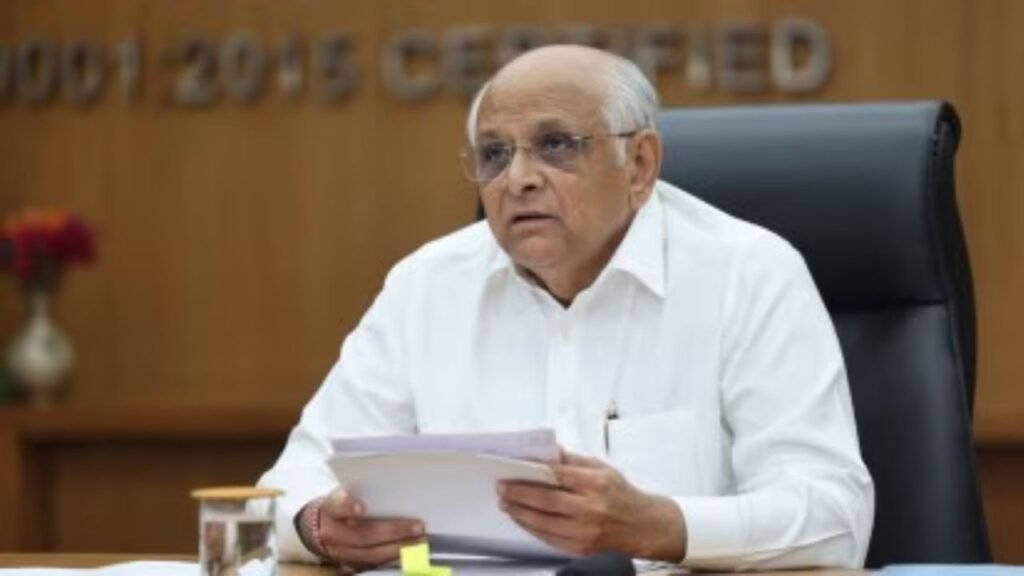The political landscape in Gujarat was jolted recently when news broke that the entire state cabinet, save for Chief Minister Bhupendra Patel, had tendered their resignations. This unprecedented move sent shock-waves through India’s corridors of power, sparking intense speculation, rumor mills, and heated debates both online and offline. What triggered such a dramatic shake-up in one of the BJP’s strongest bastions? Let’s unravel the political undercurrents behind this mass exodus and what it means for Gujarat’s governance and the party’s strategy.
The Context: An Era of Transformation in Gujarat Politics
Gujarat, often heralded as the “laboratory” for the Bharatiya Janata Party (BJP)’s policies, has witnessed a stable government and rapid economic growth for over two decades. The party’s dominance has been challenged only occasionally, making any sign of instability or sudden change a reason for national headlines.
On October 16, 2025, the news of all ministers resigning except the CM fueled talk about internal dissent, major cabinet rejigs, and speculation over the party’s future strategies. The timing was crucial—just months ahead of the state elections and amid whispers about reshuffling BJP leadership at the national level.
Why Did the Ministers Resign?
The mass resignations are neither entirely unprecedented nor without strategic motive in Indian politics. Such actions often serve key purposes:
- Cabinet Reshuffle & Revamp: Major reshuffles are a way for parties to address governance challenges, refresh leadership, and respond to public sentiment. Fresh faces and younger leaders are brought in to project change and restore voter enthusiasm.
- Performance Review: The BJP has, in recent years, emphasized accountability for ministers. Resignations could be a formality before evaluating each minister’s record and reassigning portfolios based on performance, loyalty, and emerging political equations.
- Crisis Management: Sometimes, mass resignations are triggered by scandals, corruption allegations, or factional infighting. In Gujarat’s case, while there were rumors about internal friction and dissatisfaction with key ministers, no major scandal surfaced formally.
- Central Directive: The BJP’s national leadership periodically intervenes in state governments, especially in an election year, ensuring cohesion and discipline. The resignation of ministers can be seen as a show of unity and trust in the central leadership, providing the party high command with the freedom to reconstruct the state government as needed.
Why Did the Chief Minister Stay?
Chief Minister Bhupendra Patel’s retention is telling. Patel, seen as a trusted face of the party’s leadership after the exit of Vijay Rupani in 2021, embodies the stability and continuity BJP wants to project. His staying power indicates:
- Party Confidence: The high command in Delhi, led by Prime Minister Modi (himself a former Gujarat CM), and Home Minister Amit Shah, view Patel as a capable, reliable leader who can maintain the BJP’s strong vote base.
- Transition Stewardship: A mass cabinet resignation calls for a steady hand to oversee the transition, avoid governance paralysis, and reassure bureaucrats and citizens.
- Election Strategy: With state polls looming, Patel’s leadership is expected to attract the key Patidar community votes, while signaling continuity to investors and industrialists in Gujarat’s growth sectors.
Reactions from Across the Spectrum
Opposition parties were quick to allege panic, mismanagement, and BJP’s failure to govern. The Congress and Aam Aadmi Party accused the BJP of papering over cracks in its facade and failing to address real issues: farmer distress, urban unemployment, and industrial slowdowns.
BJP, however, dismissed these claims. Party spokespersons stressed that cabinet reshuffles are signs of a dynamic, responsive government—and that “change is the hallmark of progress.” They reaffirmed their faith in Bhupendra Patel and promised a younger, more energetic team to take Gujarat to new heights.
Political observers noted that the move fits the larger BJP pattern of “course correction.” In states like Uttar Pradesh, Assam, and Uttarakhand, similar mass resignations preceded key elections and paved the way for renewed mandates.
Implications for Gujarat—and Beyond
The political shake-up is expected to have far-reaching implications:
- Governance: Expect rapid appointments of new ministers, targeting efficiency and delivery of social welfare schemes.
- Election Mood: The shake-up could re-energize BJP’s cadre and neutralize local anti-incumbency factors.
- National Optics: Given Gujarat’s importance as PM Modi’s home state, the BJP is keen to ensure a spotless image and smooth functioning—projecting Gujarat as a model of democracy and development.
Conclusion
While the resignation spectacle stirred uncertainty, it’s best seen within the BJP’s playbook of strategic renewal. The Chief Minister’s retention signals stability, while the incoming cabinet is expected to project fresh leadership, adaptability, and a renewed vision for Gujarat. The coming days will reveal how this shake-up unfolds—and whether it strengthens the BJP’s grip or opens new opportunities for challengers.


